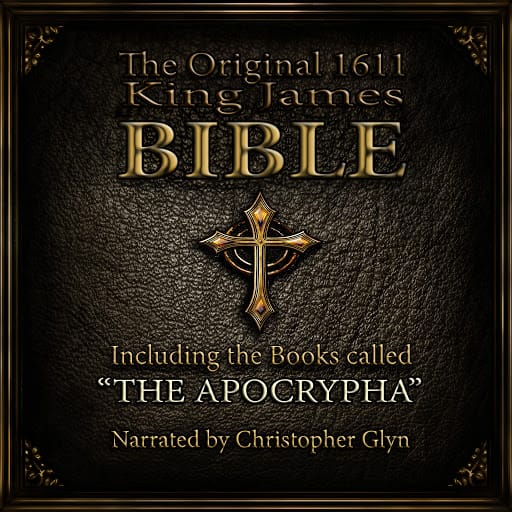The 1611 King James Bible, a landmark achievement in biblical translation, originally included a collection of texts known as the Apocrypha. These books, positioned between the Old and New Testaments, offer a captivating glimpse into the period between the two testaments, shedding light on the history, culture, and beliefs of that era. However, you won’t find these books in most modern Bibles. What happened? Let’s uncover the story of these “hidden books” and explore the reasons behind their controversial status.
A Journey Through Time and Texts
To understand the Apocrypha, we need to step back in time. In the early days of Christianity, the most widely used version of the Bible was the Septuagint, a Greek translation of the Hebrew Bible. This translation, favored by early Christians, included the Apocrypha. When King James I commissioned a new English translation, the inclusion of these books was likely influenced by the Septuagint’s prominence and the desire to provide a comprehensive and historically informed text.
The Apocrypha isn’t simply a random assortment of writings. It offers a rich tapestry of genres, ranging from historical accounts and wisdom literature to additions to familiar biblical narratives. These texts provide valuable insights into Jewish life and thought during a period spanning several centuries between the Old and New Testament eras, a period of significant cultural and religious transformation.
The Disappearance of the Apocrypha: Why It Was Removed
Fast forward to the late 19th century, and the religious landscape had shifted dramatically. The Protestant Reformation, with its emphasis on sola scriptura (Scripture alone), led to increased scrutiny of biblical texts. This scrutiny extended to the Apocrypha, raising questions about its authorship, historical accuracy, and theological alignment with the Hebrew Bible.
Several factors likely contributed to the Apocrypha’s removal from many Protestant Bibles, including the King James Version, in 1885:
- Lack of Hebrew Originals: Most Apocryphal books were originally written in Greek, not Hebrew, the language of the Hebrew Bible (Tanakh). This difference in language raised concerns about their authenticity and canonical status for those prioritizing the Hebrew texts.
- Historical Discrepancies: Some critics argued that certain historical details within the Apocrypha conflicted with established biblical accounts, casting doubt on their reliability.
- Theological Differences: Protestant reformers, emphasizing sola scriptura, were hesitant to grant canonical status to books whose teachings they perceived as differing from or contradicting what they considered the core message of the Bible.
The removal of the Apocrypha from the KJV and other Protestant Bibles reflects the evolving understanding of biblical canon and the influence of theological shifts during the Reformation. However, it’s important to note that the Apocrypha continues to be recognized as a valuable part of the biblical tradition by Catholic and Orthodox Christians, who often refer to these books as deuterocanonical, meaning “second canon.”
Unpacking the Apocrypha: A Glimpse into 14 Books
So, what exactly are these 14 books that caused such debate? Here’s a brief overview:
- 1 Esdras: A historical account that parallels parts of Chronicles, Ezra, and Nehemiah, providing a different perspective on events during the restoration of Jerusalem.
- 2 Esdras: An apocalyptic work filled with visions, prophecies, and reflections on the end times, offering a glimpse into Jewish apocalyptic thought.
- Tobit: A heartwarming tale of faith, perseverance, and divine providence, following the story of Tobit, a righteous man facing various trials.
- Judith: A dramatic story of a courageous widow who saves her people from invasion, highlighting themes of faith, courage, and resistance against oppression.
- Additions to Esther: These additions to the Book of Esther expand upon the narrative, providing further details and context.
- Wisdom of Solomon: A philosophical exploration of wisdom, righteousness, and the meaning of life, attributed to King Solomon.
- Sirach (Ecclesiasticus): A collection of ethical teachings and wisdom sayings, offering practical guidance for daily life.
- Baruch: Prophetic writings attributed to Baruch, Jeremiah’s scribe, containing messages of judgment, hope, and consolation.
- Letter of Jeremiah: A scathing critique of idolatry, warning against the dangers of worshipping false gods.
- Prayer of Azariah: A prayer of repentance and supplication, traditionally inserted within the Book of Daniel.
- Susanna: A story that highlights themes of justice, integrity, and resisting false accusations.
- Bel and the Dragon: Two tales that challenge religious deception and idolatry.
- 1 Maccabees: A historical account of the Maccabean Revolt, a Jewish uprising against Seleucid rule and religious persecution.
- 2 Maccabees: Another account of the Maccabean Revolt, emphasizing the role of faith, divine intervention, and martyrdom.
The Enduring Legacy of the Apocrypha
While the Apocrypha might not hold canonical status for all Christian traditions, its significance extends far beyond this debate. These books continue to fascinate scholars and offer valuable insights into:
- The Intertestamental Period: The Apocrypha provides a crucial window into the period between the Old and New Testaments, a time of significant cultural exchange and religious development. It illuminates the beliefs, practices, and historical context that shaped early Christianity.
- Biblical Interpretation: Studying the Apocrypha sheds light on the evolution of biblical interpretation and the development of different canons within Christianity. It reveals the diversity of thought and tradition within early Christianity.
- Literary and Cultural Influence: The Apocrypha has had a profound impact on Western literature, art, and music. Its stories and themes have inspired countless writers, artists, and composers, leaving an indelible mark on our cultural heritage.
Exploring Further: The Apocrypha’s Relevance Today
The Apocrypha, even in its absence from many modern Bibles, continues to spark intrigue and offer relevance for contemporary readers. Here’s why:
- Historical Curiosity: For history buffs, the Apocrypha provides a firsthand account of a pivotal period in Jewish history, offering insights into the lives, beliefs, and struggles of people living under foreign rule and navigating cultural and religious change.
- Literary Appreciation: The Apocrypha is a literary treasure trove, brimming with captivating stories, poetic language, and thought-provoking wisdom literature. Its influence on Western literature makes it a rewarding read for anyone interested in exploring literary history.
- Theological Reflection: The Apocrypha’s exploration of themes such as wisdom, righteousness, divine providence, and the afterlife continue to resonate with readers grappling with questions of faith, ethics, and the human condition.
The story of the Apocrypha reminds us that the Bible, as we know it today, is the product of centuries of debate, interpretation, and evolving perspectives. It encourages us to approach these texts with curiosity, open-mindedness, and a willingness to grapple with the complexities of faith and history.
Discover the gripping tale of Bernita Landry, a renowned artist whose works have captivated the art world. And don’t miss the fascinating story of Colestein Veglin, a brilliant scientist who made groundbreaking contributions to the field of astrophysics.
- Senior at What Age: Benefits & Eligibility Guide - March 29, 2025
- Unlocking Senior Benefits: How Old is a Senior? Your Complete Guide - March 29, 2025
- Master Russian Politeness:A Guide to Saying Please - March 29, 2025

















2 thoughts on “The Hidden Books of the King James Bible: Exploring the 1611 Apocrypha”
Comments are closed.